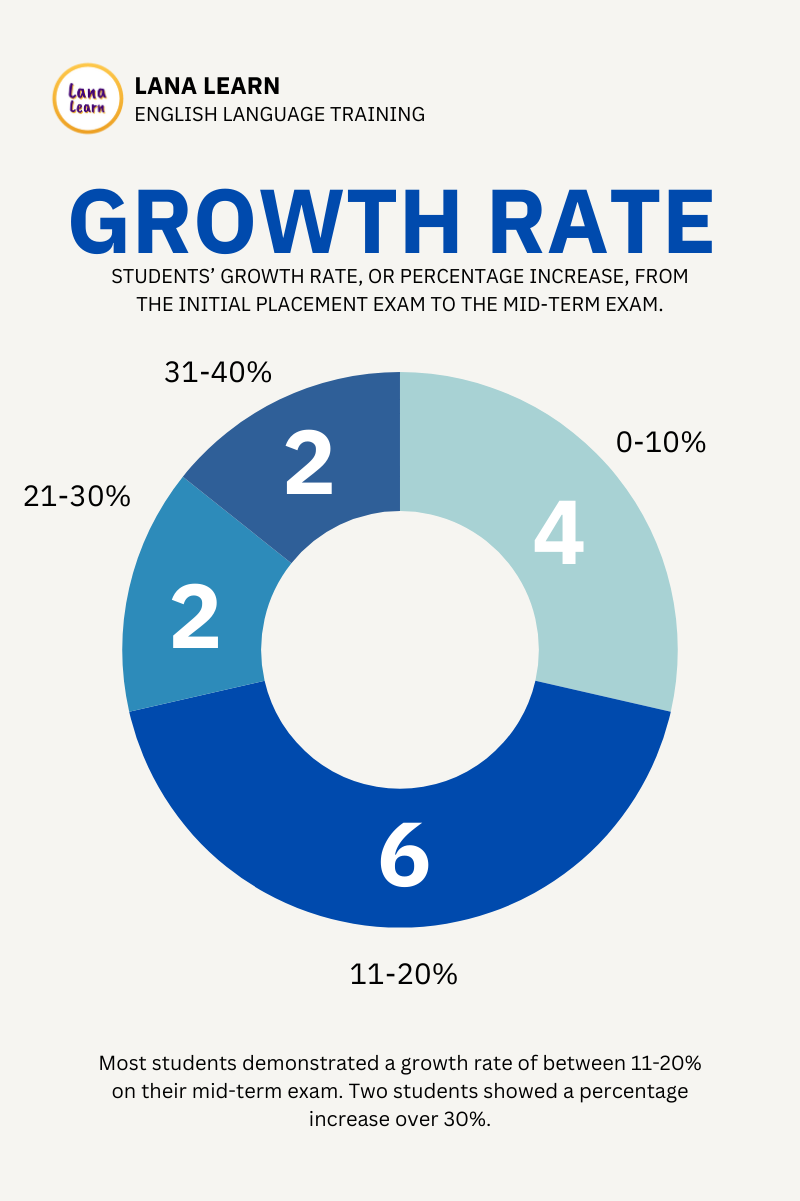Lana English Language Training instructors focus on improving students’ English ability as they enter in to the second half of the course.
This February marked the most important holiday of the Vietnamese calendar, Lunar New Year. In addition, it was the mid-term point for Lana’s English Language Training (ELT) program here in Hanoi. This US Air Force-funded program currently has 44 student participants from the different branches of the Vietnamese military. Our goal is to widen the pool of potential candidates that can move onto to follow-on training (FOT) programs in the US. The cohort is divided into three classes, and I teach the upper-level class known as Class Alpha. As we rounded out the first half of this course, I reflected on some questions I had about improving students’ English ability.
- So far, what is the growth rate of each of my students?
- How many people scored lower on their mid-term test in relation to their initial placement exam?
Upon students’ arrival to the program, we administered an initial American Lanuage Course Placement Test (ALCPT). This multiple-choice exam measures a student’s English comprehension level through modes of listening and reading. We give a different form of the exam again as their mid-term test and then once more upon completion of the six-month course.
Mid-term Test Results
Overall, I was pleased with my students’ mid-term test results. The class averaged a score of 70 which places them in the “advanced” category according to the Defense Language Institute English Language Center (DLIELC). Additionally, none of my students received a mid-term score that was less than their initial test score. Since it’s a mulitple-choice test, it’s not uncommon for this to happen.
The overall growth, or percentage increase, from the initial to mid-term test was 18%. According to DLIELC, the higher the students’ English level is, the longer it takes to increase their growth rate. A few students showed exceptional growth. Two students, Maj Trịnh Hoàng Tuân and Lt Nguyễn Đức Trường, demonstrated a growth rate of 33%. Another student, Lt Nguyễn Ngọc Ninh, improved by 30% with a score increase of 47 to 61, thus moving him out of the elementary level and into intermediate. Capt Nguyễn Trần Hải Hà demonstrated a growth rate of 27% since our start date in November. His score increased from 63 to 80 which moved him from intermediate to advanced.
Contributing Factos
Overall, I am proud of the effort each member of the class has put in thus far. The test results shed some light on the progress we have made. I believe that a number of factors contributed to the students’ improvement. First, students attend daily language lab sessions to practice their listening skills. This is vital to their test success since more than half of the exam tests listening comprehension.
Secondly, I’ve worked with the class on good techniques for dealing with listening questions.
- Pre-read a question before the listening portion is heard.
- Remove the least likely answer and predict the two most likely answers.
- When listening, try to pick out the two or three key words that are related to the written question. Then select the answer that seems to match the grammar and the topic the best.
- Don’t allow a difficult question to cause you to lose track of the next one.
In addition to listening techniques, I try to make sure that the vocabulary of each book is very familiar by using online Quizizz practice every day for homework. I design my online quizzes to focus on all the relevant vocabulary of each lesson and include common errors that confuse most Vietnamese English language learners. This allows for consolidation on the curriculum lexis.
Moving forward, I have noticed a few issues. The class seemed to do extremely well with the reading portion of the test which tells me they understand most of the grammar and vocabulary. However, the majority of their mistakes are still on the listening portion. This indicates to me that I need to continue to increase listening as a portion of class time and continue to work on finding more ways to improve their listening strategies.

